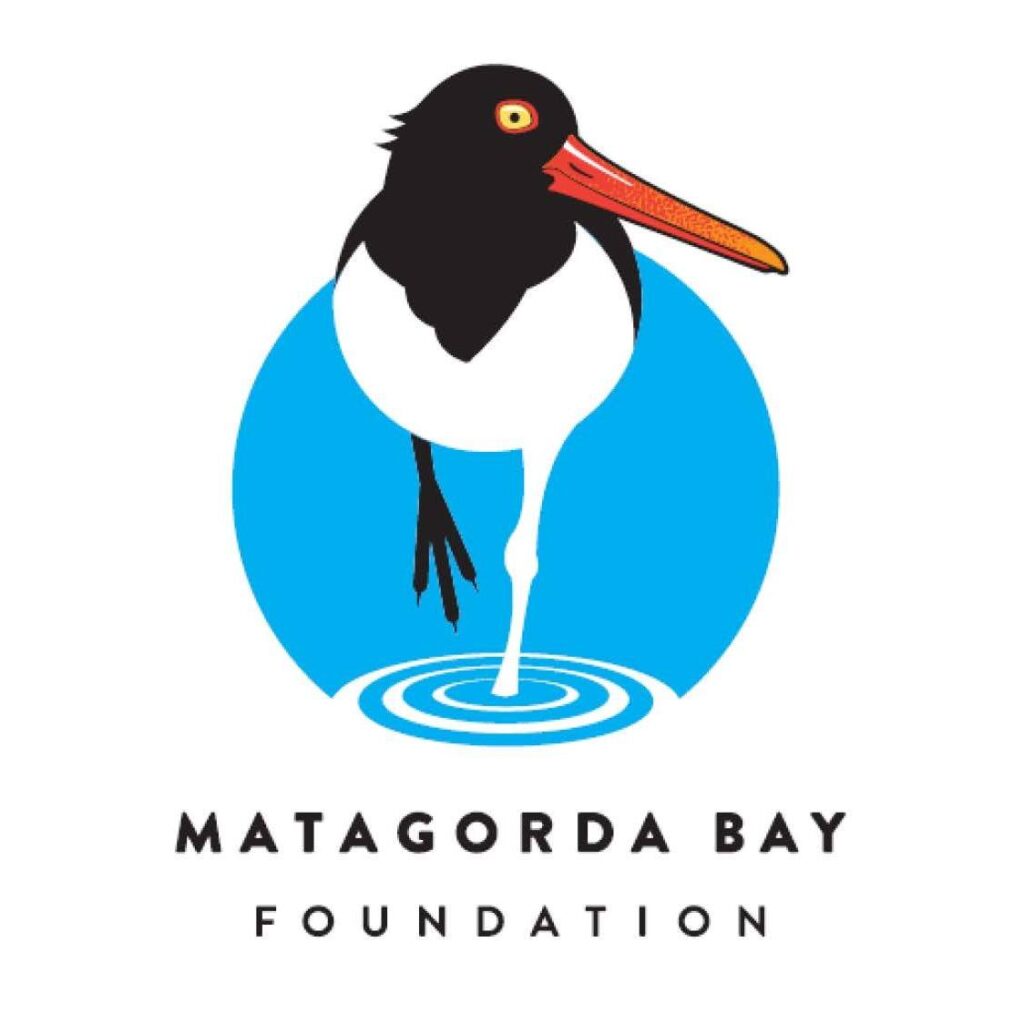Matagorda Bay Foundation: Safeguarding Texas’s Coastal Treasure
The Matagorda Bay Foundation (MBF) is at the forefront of efforts to protect and restore one of Texas’s most ecologically diverse coastal systems. Through a combination of student-led research, citizen science, habitat restoration, and strategic partnerships, MBF transforms data into action and inspires stewardship across the region.

Matagorda Bay spans over four hundred square miles—roughly half the size of Yosemite National Park—and is separated from the Gulf of Mexico by more than 50 miles of barrier islands. It includes major bays such as Lavaca Bay, West Matagorda Bay, and East Matagorda Bay, along with numerous smaller bays and freshwater inflows from the Colorado and Lavaca-Navidad Rivers. Positioned between the freshwater estuaries of the upper Texas coast and the saltier lagoons of South Texas, the bay supports a rich mosaic of habitats, including wetlands, riparian corridors, coastal prairie, tidal flats, oyster reefs, and seagrass beds. These habitats are vital for sustaining diverse populations of fish, birds, and other wildlife, many of which are economically and ecologically significant.
However, like many U.S. estuaries, Matagorda Bay faces increasing pressure from urbanization, industrial development, and land use changes. The most pressing threat is the growing demand for freshwater in central Texas. Historically, the Colorado River supported environmental, agricultural, and municipal needs. Today, water allocations must be balanced between the needs of over two million residents, industrial and agricultural users, and the ecological requirements of the river and bay. As reservoir levels drop, freshwater allocations for agriculture and environmental flows are reduced, leading to prolonged low-flow conditions, impaired water quality, and declines in wetland health and biodiversity.
Reduced water availability has also severely impacted rice farming in the region. Historically, rice cultivation created thousands of acres of seasonal wetlands that supported migratory waterfowl and helped maintain low salinity levels in coastal habitats. Today, irrigation costs have risen, rice acreage has declined, and wetland habitats have been lost or degraded. Farmers and ranchers report increased erosion, marsh edge loss, and conversion of riparian zones—further evidence of the ecological toll of restricted water flows.
MBF addresses these challenges through a variety of initiatives. Its student research and scientific collaboration programs empower young scientists to investigate issues like microplastics and turbidity, providing field access and logistical support to turn ambitious questions into actionable insights. The Citizen Science Water Quality Monitoring program trains volunteers to collect monthly samples at key sites around the bay, measuring temperature, dissolved oxygen, pH, turbidity, and nutrients. These readings are uploaded to an online portal, where MBF staff and partner scientists analyze the data to identify pollution sources and guide restoration efforts. The program not only informs water-allocation advocacy but also transforms residents into active stewards of their waterways.
Habitat restoration is another cornerstone of MBF’s work. Seagrass restoration projects will help acquire knowledge about seagrass health, which, in turn, helps stabilize shorelines and improve water clarity, while oyster reef restoration—such as the Oliver Point/Reef Project—aims to restore nearly 50 acres of habitat. Each oyster can filter up to 50 gallons of water per day, making reefs powerful allies in the quest for cleaner water. Living shoreline and marsh protection projects at Redfish Lake and Salt Lake focus on restoring tidal marshes and submerged aquatic vegetation, which reduce erosion and enhance natural filtration systems. Scientific monitoring, including the deployment of flow and tide meters and wave gauges in collaboration with Texas A&M and other agencies, helps MBF track water movement and identify sources of degradation, guiding future restoration and policy decisions.
Strategic partnerships amplify MBF’s impact. Collaborations with local communities, businesses, and environmental organizations—such as the Texas Coastal Conservation Association and Matagorda County entities—bring additional resources and information to water quality initiatives. These partnerships are essential to securing funding, sharing knowledge, and engaging stakeholders.
To further community engagement, MBF hosts annual stakeholder meetings to gather input on environmental concerns and priorities. While the date for this year’s meetings is yet to be finalized, they are expected to take place in September across four key locations: Bay City, Palacios, Sargent, and Matagorda. Free and open to the public, these sessions include updates on ongoing MBF projects, open discussions on emerging concerns, and brainstorming of new project ideas. Water quality remains a central theme—without it, the health of the bay system and surrounding ecosystems is at risk.
Through these innovative efforts, MBF is transforming Matagorda Bay into a model of sustainability and resilience. Its work not only improves water quality but also sets a national standard for coastal conservation and community-driven stewardship.


